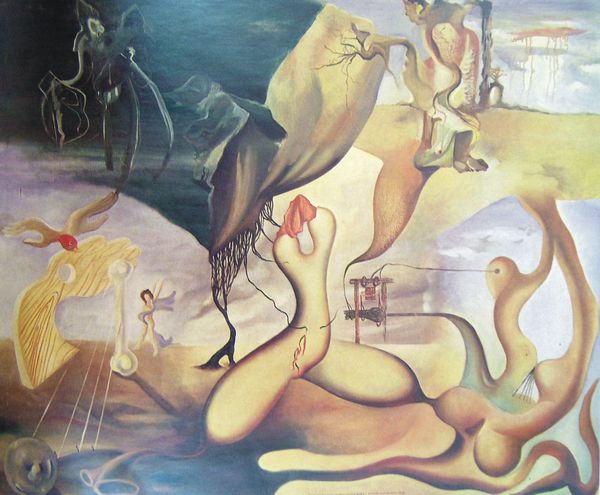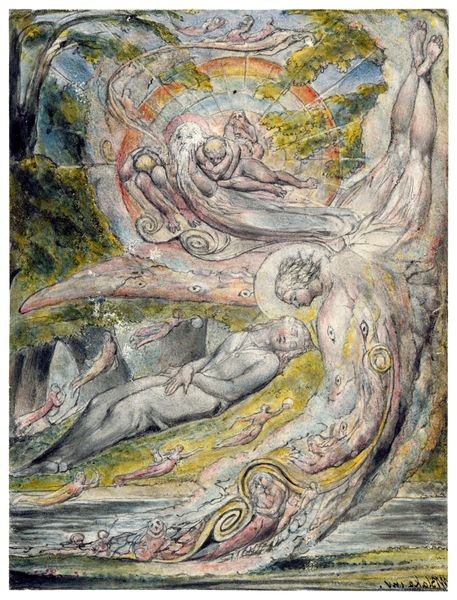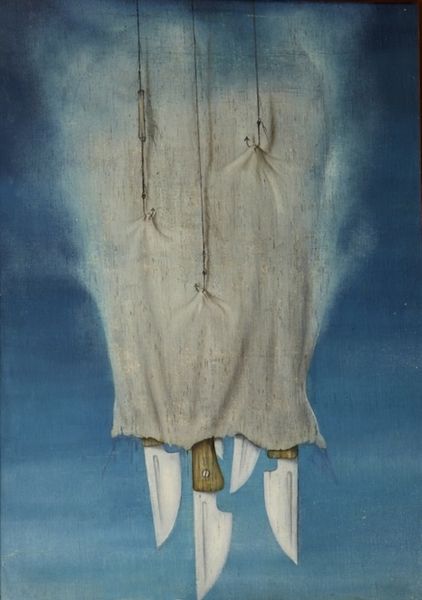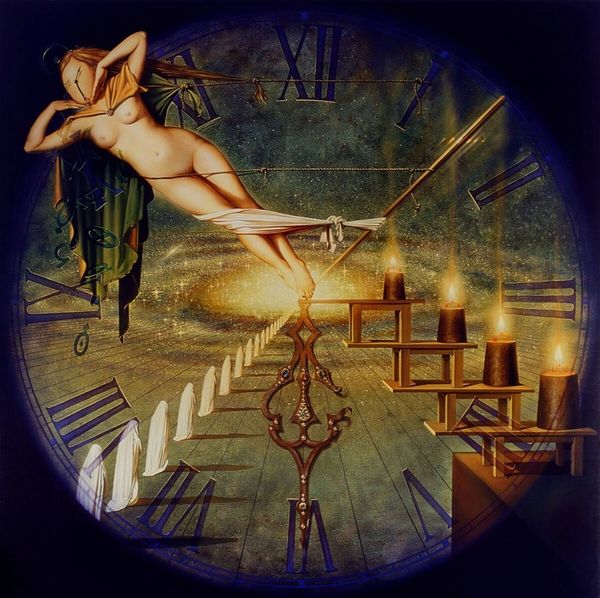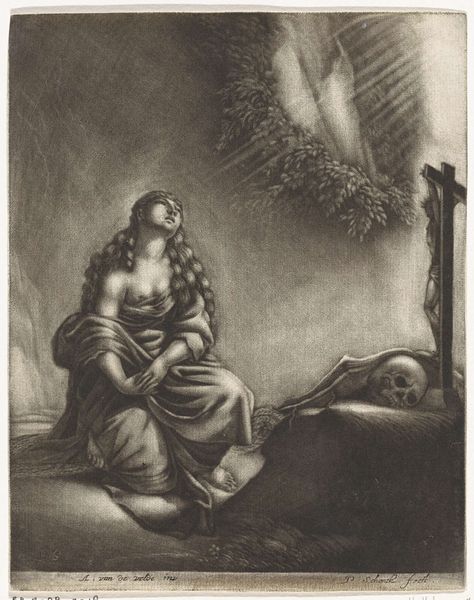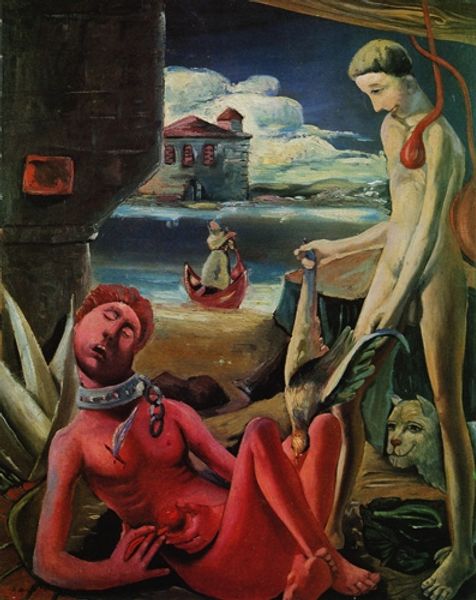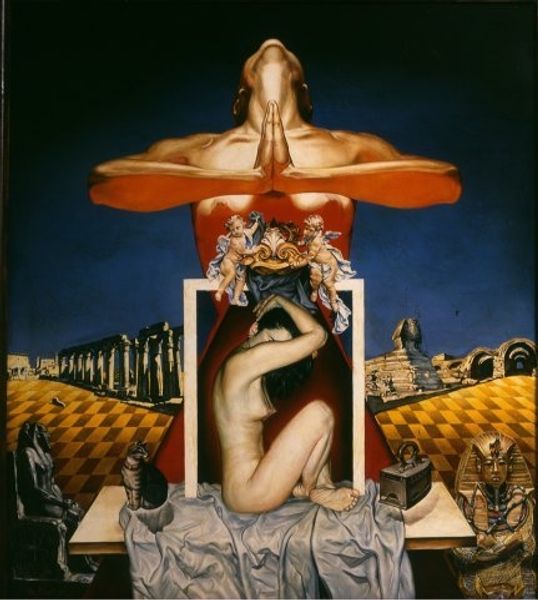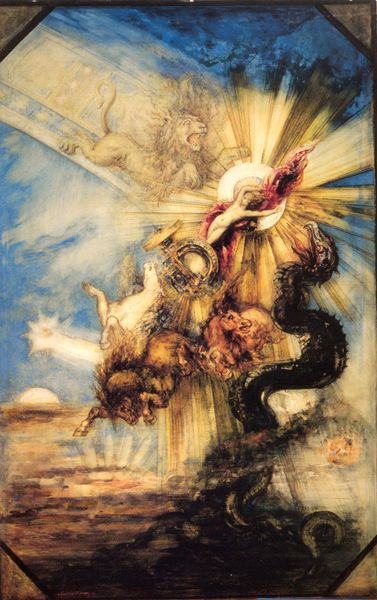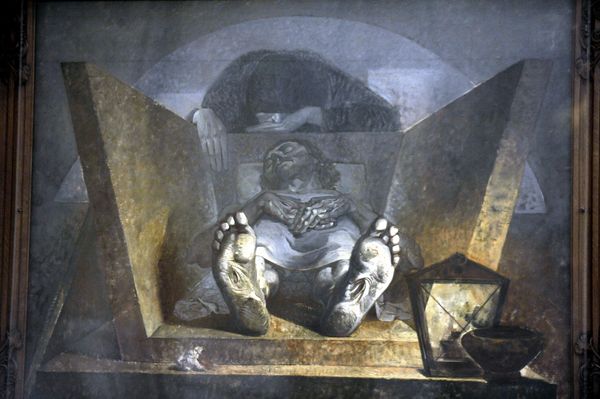
oil-paint
#
portrait
#
acrylic
#
allegory
#
oil-paint
#
figuration
#
oil painting
#
mythology
#
history-painting
#
portrait art
Copyright: Public Domain: Artvee
Curator: Eduard Veith's oil painting, “Ehrung an einem Heldendenkmal”—meaning, “Homage at a Heroes' Monument”—depicts a scene of mourning and remembrance, laden with symbolism. What strikes you most about this composition? Editor: Initially, the theatrical quality. It's staged in a way that feels almost dreamlike. The palette is somber, and then, boom, there's an angelic figure rendered with a haunting luminescence. But this dream feels dark, more of a fever dream perhaps? Curator: The painting evokes themes of loss and idealized heroism common in history paintings. Note the allegorical figure lying prostrate before what seems to be a memorial, overshadowed by the imposing winged figure clad in armor. Consider the time this work was created; likely, the artist reflects upon broader societal views of valor. Editor: Absolutely, I agree, but this figure... this looks as if it’s less about the glory and more about... witnessing devastation. He is like an angel of judgement, maybe a ghost of heroes, appearing sad more than proud, don’t you think? There is also something odd about that single soldier still clinging to duty at the right edge of the painting. Curator: He embodies the institutional perpetuation of sacrifice for ideological ends. These public monuments of that time weren't simply tributes; they served as powerful tools for shaping national identity and encouraging future generations to similar sacrifice. The artistic depictions, although filled with symbolic glory and pride, obscure the emotional realities of the loss it symbolizes. Editor: Precisely. See, that soldier there? Is he a symbol, or simply exhausted by this ritual and resigned to continue to participate to it because that’s what expected? Is he reflecting upon loss as well? What happens after the trumpet stops and the cap is removed and we are simply…left? Curator: This painting therefore encapsulates a particularly interesting sociopolitical dynamic of image-making surrounding conflict and bereavement at the time, wherein personal grief becomes co-opted into nationalistic narratives. The effect Veith achieves is to simultaneously critique, whilst representing common sensibilities and imageries. Editor: I leave with a disquieting question that asks not "what did they fight for," but "was it worth the price?" Veith delivers this with skill. Curator: Indeed. Thank you for your observations. Let’s now examine some other pieces in the room that treat very different questions about social agency.
Comments
No comments
Be the first to comment and join the conversation on the ultimate creative platform.
